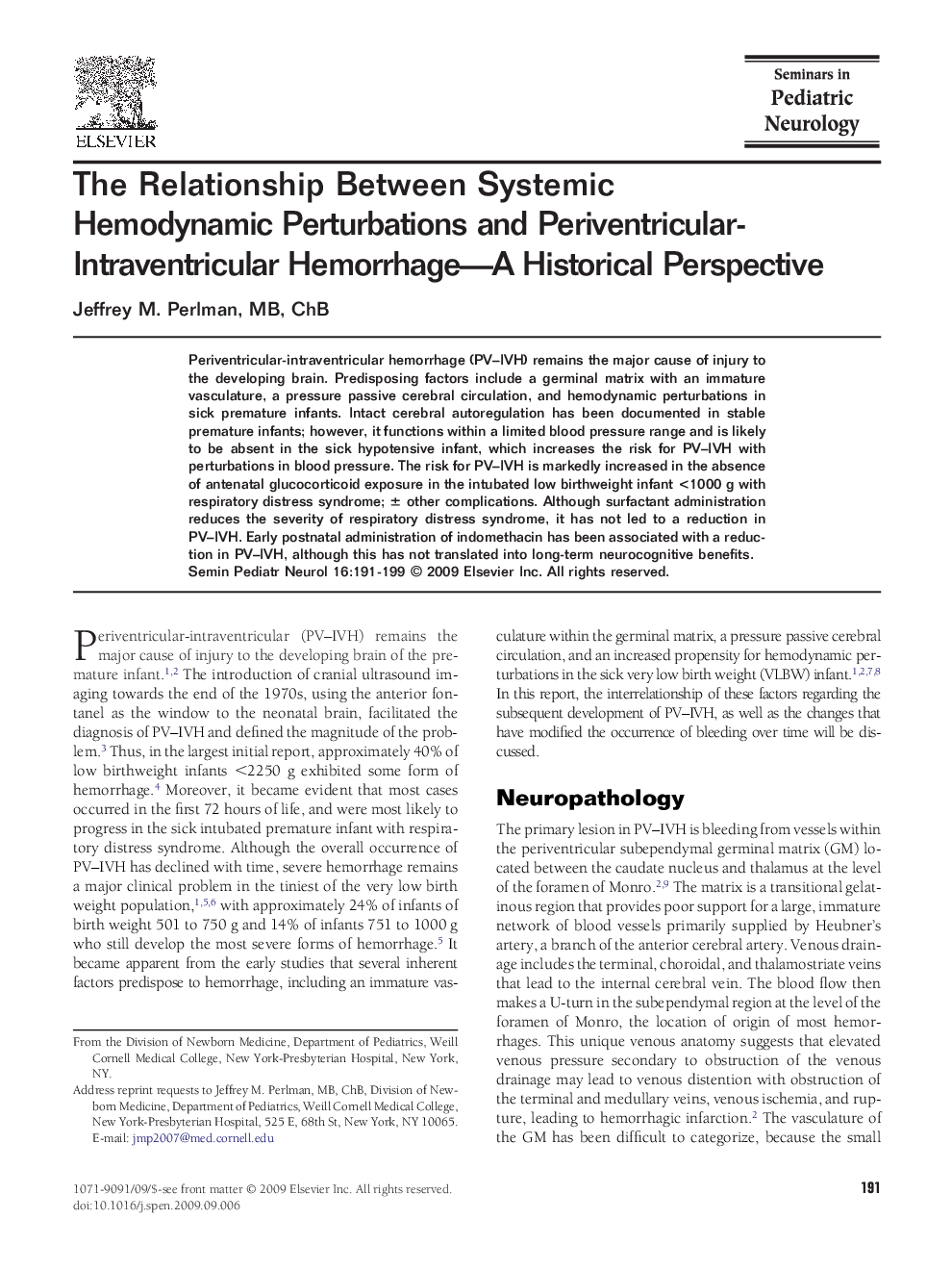| Article ID | Journal | Published Year | Pages | File Type |
|---|---|---|---|---|
| 3090919 | Seminars in Pediatric Neurology | 2009 | 9 Pages |
Periventricular-intraventricular hemorrhage (PV–IVH) remains the major cause of injury to the developing brain. Predisposing factors include a germinal matrix with an immature vasculature, a pressure passive cerebral circulation, and hemodynamic perturbations in sick premature infants. Intact cerebral autoregulation has been documented in stable premature infants; however, it functions within a limited blood pressure range and is likely to be absent in the sick hypotensive infant, which increases the risk for PV–IVH with perturbations in blood pressure. The risk for PV–IVH is markedly increased in the absence of antenatal glucocorticoid exposure in the intubated low birthweight infant <1000 g with respiratory distress syndrome; ± other complications. Although surfactant administration reduces the severity of respiratory distress syndrome, it has not led to a reduction in PV–IVH. Early postnatal administration of indomethacin has been associated with a reduction in PV–IVH, although this has not translated into long-term neurocognitive benefits.
